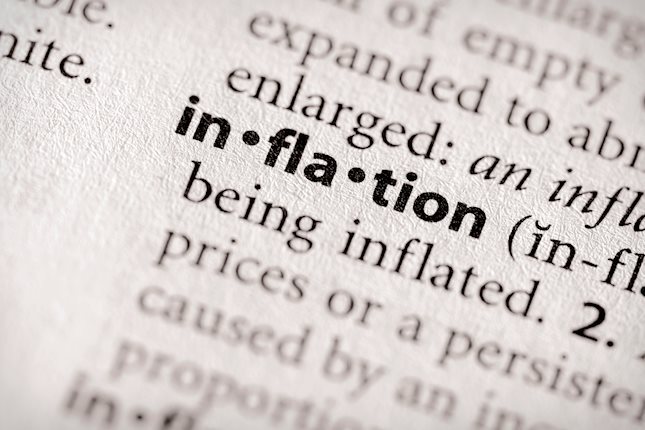| Consumer Price Index (CPI) |
UP  |
US headline CPI dropped at a monthly 0.1% and rose 1.9% from a year earlier. Additionally, CPI stripping food and energy costs rose 0.2% MoM and 2.2% over the last twelve months. Read more... |
| Producer Price Index (PPI) |
DOWN  |
The Producer Price Index for final demand edged up 0.1 percent in Nov, seasonally adjusted. For the 12 months ended in Nov, prices for final demand less foods, energy, and trade services advanced 2.8%. Read more... |
| Personal Consumption Expenditure (PCE) |
DOWN  |
The Fed's preferred gauge of inflation, rose to 1.9% on a yearly basis in Nov from 1.8 in Oct and came in line with the market expectation. On a monthly basis, core PCE price index remained steady at 0.1%. Read more... |
| Average Hourly Earnings (AHE) |
UP  |
Average earnings are rising with the Fed also noting a pick-up in non-wage benefit costs such as paid vacation days, signing bonuses and healthcare packages. There is a good chance firms will look to pass these costs onto consumers by
rising prices. Read more... |
| Employment Cost Index (ECI) |
UP  |
Wages and salaries, accounting for roughly 70% of the index, increased 0.9% while benefit costs increased 0.4%. The pickup in wage pressure was relatively broad-based across occupational and industry groups. Read more... |
| Import and Export Prices |
DOWN  |
Imports: Both the cost of petroleum and non-petroleum goods falls, hinting inflation could remain tame for a while. PPI expectations decrease thereby, as import prices and oil serve as leading indicators. Exports: like with imports, peaked
in summer 2018 and plunging since then. Read more... |
| Unit Labor Costs (ULC) |
UP  |
From the third quarter of 2017 to the third quarter of 2018, productivity increased 1.3 %, reflecting a 3.7% increase in output and a 2.3-percent increase in hours worked. Read more... |
| Gross Domestic Product (GDP) Deflator |
UP  |
Real gross domestic income (GDI) increased 4.3% in the third quarter, compared with an increase of 0.9% in the second quarter. Current-dollar GDP increased 4.9 percent, or $246.3 billion, in the third quarter to a level of $20.66 trillion.
Read more... |
| Oil Prices |
DOWN  |
Recent drop in oil prices translates into negative contribution to overall inflation figures. Without oil, “core” inflation is up and may continue grinding higher as spare capacity in the economy shrinks. Read more... |
| International Gold Prices |
UP  |
The price of gold is rising in all major currencies since the lows of Aug-Sep 2018, specially against the Canadian and the Australian dollar. Read more... |
| Gold/Oil Ratio |
DOWN  |
The ratio made a bottom in Oct 2018, climbing since then because of falling oil prices and rising gold prices. But it is not yet at extreme levels where it could mean investors are nervous, preferring safety over growth. |
| Commodity/Bond Ratio |
DOWN  |
Commodities are declining in relationship to bond prices, which is viewed as a deflationary sign. Read more... |
| Trade Weighted Exchange Rates |
DOWN  |
The Trade-Weighted Dollar keeps rising and is apporaching the 130 mark. An appreciating exchange rate is usually thought to be contractionary and deflationary. Read more... |
| International Asset Prices |
UP  |
The recent plunge in US equities has been less severe when translated to other major correncies. So from an international perspective, US assets still look promissing. Read more... |
| Phillips Curve |
DOWN  |
As the post-crisis recovery continues, many economies have seen low levels of unemployment through 2018 without a material wages response. The impact of higher wages on core inflation has yet to materialise. Read more... |
| Forward Breakeven Inflation Rate |
DOWN  |
Investors expect future inflation to be lower than the break-even rate, i.e. the yield on inflation-indexed bonds (TIPS) is underperforming the regular plain-vanilla bonds, so the break-even rate decreases. Read more... |
| Bond Yield Spreads |
DOWN  |
Economists are concerned about the potential for an already flat US yield curve to invert, i.e. 2-year bond yields rising above 10-year yields. Read more... |
| The Business Cycle |
UP  |
The U.S. economy continues to be in an economic expansion. But some longer leading indicators such as auto sales and building permits appear to be rolling over, which adds to the evidence that the economy is in a late cycle phase. Read more... |
 SPECIAL RESOURCE
SPECIAL RESOURCE